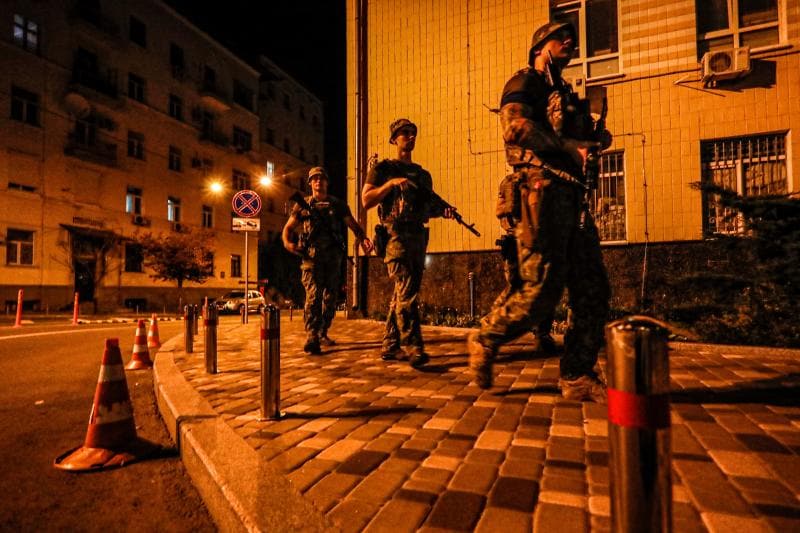Volkswagen is withdrawing from its controversial involvement in China’s Uyghur region of Xinjiang. The Urumqi factory, which was operated with Chinese state-owned SAIC as a partner, was sold to Chinese state-owned SMVIC, which is active in the used car business.
The Urumqi site in northwestern China has long been criticized for human rights abuses against members of the Uyghur minority. VW investigated the allegations with an investigation. Volkswagen operated the plant in a joint venture with SAIC. Economic reasons were given as the reason for the sale. Negotiations took place for months about the future of the factory. No cars have been built in Xinjiang since 2019.
At the same time, Volkswagen on Tuesday extended its cooperation agreement with SAIC for another ten years until 2040. However, there is no connection between the withdrawal from Xinjiang, which according to the VW Group was sealed a few days ago, and the contract extension, Volkswagen said. VW wants to launch a new product offensive in China from 2026 and launch 18 new models of the core Volkswagen and Audi brands with SAIC by the end of the decade. Of these, 15 are exclusively intended for the Chinese market. By 2030, the VW Group wants to sell 4 million cars per year, giving it a 15 percent market share in China. Last year the share was 14.5 percent, according to VW.
The accusations in Xinjiang
Volkswagen opened the plant in the provincial capital Urumqi together with SAIC in 2013 – with a contract term at the time scheduled to last until 2029. According to VW, SAIC had majority control of the site where vehicles were once assembled for sale in western China. But the project failed in the weaker than expected market.
Instead, serious allegations of human rights abuses resulting from forced labor at the factory have been made in recent years. Many Uighurs, a Muslim minority, live in Xinjiang. According to human rights activists, hundreds of thousands of them had experienced years of oppression, been forced to work or were sent to re-education camps. China denies the accusations.
In the region, but also in other parts of China, extremists have been carrying out deadly terrorist attacks for years. Starting in 2014, Beijing finally cracked down on Muslim minorities in resource-rich Xinjiang.
A difficult process
Following the allegations, VW commissioned a company in the summer of 2023 to investigate working conditions at the factory in view of the allegations. In December, the auditors announced that they had found no evidence or proof of forced labor among employees. Critics complained that the anonymity of employees interviewed in the study was not adequately protected.
In February, Volkswagen finally announced that it was in talks with SAIC about the future direction of its business in Xinjiang. But withdrawing from the province was difficult because SAIC also had to agree
VW’s partners in China
Volkswagen established a joint venture with the Shanghai Automotive Industry Corporation (SAIC) in the 1980s. This joint venture laid the foundation for Volkswagen’s expansion in the Chinese market. Another joint venture was later established with China First Automobile Works (FAW). In 2017, VW also established a joint venture with Anhui Jianghuai Automobile (JAC). This company focused on the development and production of electric vehicles. Volkswagen has also entered into a strategic partnership with Chinese electric vehicle manufacturer Xpeng.
For a long time, foreign car manufacturers in China had to produce their vehicles exclusively through joint ventures with local partners. This arrangement allowed access to the huge Chinese market, but also led to technology transfers. In recent years, Beijing began to relax regulations until restrictions were finally lifted completely in 2022. Volkswagen still remained loyal to its Chinese partners. In total, the VW Group now operates 38 factories in the People’s Republic, excluding Urumqi.
Who will take over the factory in Xinjiang?
The buyer of the factory in Urumqi and the two test tracks in Turpan and Anting with the remaining just over 170 employees is a state-owned company from Shanghai. It was said that the new owner had promised to take over the remaining employees.
The plant also caused problems for VW due to the weak car market in the area and the corona pandemic. No cars have been produced there since 2019. Most recently, the workforce, almost a quarter of whom belonged to an ethnic minority according to older VW information, took care of the technical commissioning of vehicles such as the VW Passat or Lavida, for example adjusting the chassis or carrying out further tests. At its peak between 2015 and 2019, the factory had approximately 650 employees, according to VW.
Other works may be reviewed
VW wants to adapt its production network beyond Xinjiang, as has been said. The locations are being converted to focus on electrification. However, according to VW, this is not possible for all factories. There have been rumors in the past that VW might sell its factory in Nanjing, eastern China.
Recently it became clear that VW is in crisis. In Germany, workers are concerned about factory closures or layoffs. The situation has also visibly deteriorated in China. The ‘Middle Kingdom’ guaranteed the German company rising profits for decades.
However, according to experts, the group failed to launch e-mobility in China and had high costs and low usage. VW followed suit with electric cars built specifically for the Chinese market, but brands such as BYD and Li Auto have so far lagged behind in the bitter price war between Chinese competitors. According to Volkswagen, 2025 will therefore be difficult. From 2026 onwards the trend should increase again.
Source: Krone
I am Wallace Jones, an experienced journalist. I specialize in writing for the world section of Today Times Live. With over a decade of experience, I have developed an eye for detail when it comes to reporting on local and global stories. My passion lies in uncovering the truth through my investigative skills and creating thought-provoking content that resonates with readers worldwide.



